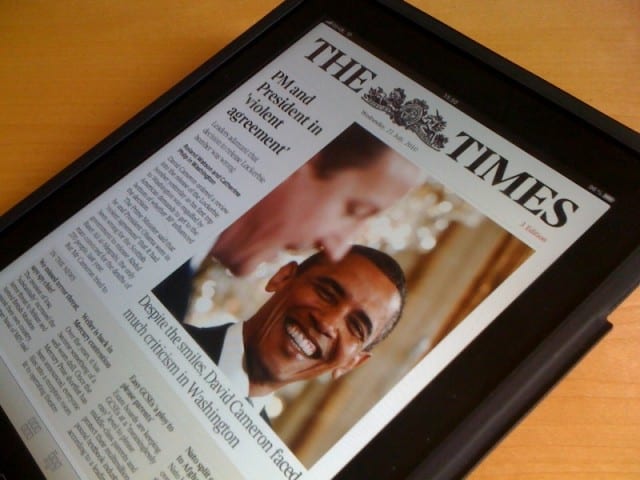
I’ll bet The Times sub-editors raised some eyebrows when their business writer Emily Ford filed her piece, Why I’m not paying any more, for the weekend…
“As (Spotify) got bigger, the annoying adverts started to creep in and, with them, the gnawing sense that it was unfair to get so much use out of a service without paying. So a year ago, I went premium…
“But last week I reverted back …
“For me, Spotify is a victim of the conundrum that almost all internet industries have yet to resolve – when you can get something so good for free, why pay?”
That is ironic because it is the same argument some onlookers use to suggest The Times’ own payment strategy “won’t work” (you’ll need to be a subscriber to read Ford’s piece).
Let’s compare…
Spotify’s raison d’être is making the listening experience so appealing and easy that people will want to pay for it rather than download illegally or elsewhere for free.
It’s having some success within that. Having racked up three million paying subscribers from an apparent 15 million active users for a conversion rate of 20 percent, it has built the world’s largest music subscription business.
That is at a price slightly more than The Times’ own monthly news package, which does not come with a free trial in the same way Spotify does.
By contrast, The Times website has slipped from around 20 million unique monthly users to 115,000 paying online subscribers – a 0.57 percent conversion.
This, however, is not a like-for-like comparison. Only a minority of The Times’ total, pre-paywall monthly uniques could ever have been considered “active” (ie. core, regular) readers, in the same way Spotify describes them. Current online subscribers as a percentage of this figure are likely far higher.
By the same token, were Spotify to express its subscriber count as a percentage of total users, it would shrink drastically. That is especially so since, lately, its first-time, free user base has been inflated by its Facebook promotion.